Survivorman Les Stroud takes you on his top five Canadian outdoor adventures
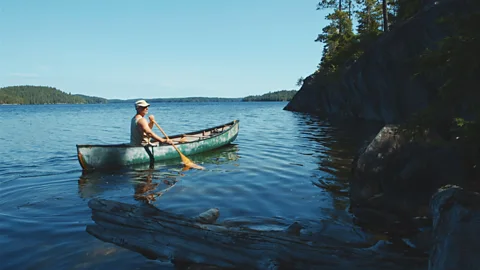 Kevin Kossowan
Kevin KossowanHe's survived adventures all over the globe – sometimes, barely. Here are his top outdoor escapes in his homeland of Canada, from dogsledding in Inuvik to hot tent camping in Temagami.
From the sweeping prairies and lush forests of the Rocky Mountains to the crystalline glacial lakes and turquoise splendour of the Northwest Pacific Ocean, Canada has become a world-renowned symbol of nature, unspoilt beauty and brutality. Its frigid winters, harsh terrains, often aggressive wildlife and vast expanses of untouched land can make embarking into the Canadian wild feel like taking a leap of faith into the great, moody unknown.
Few have understood and experienced this duality better than Ontario native Les Stroud, who has built a 30-year career teaching people how to both survive and enjoy Canada's wilderness. "We have done our damage," he admits. "But we are blessed with areas that are still pristine. We offer the kind of wilderness experience that has been dreamed about since the days of Charles Dickens."
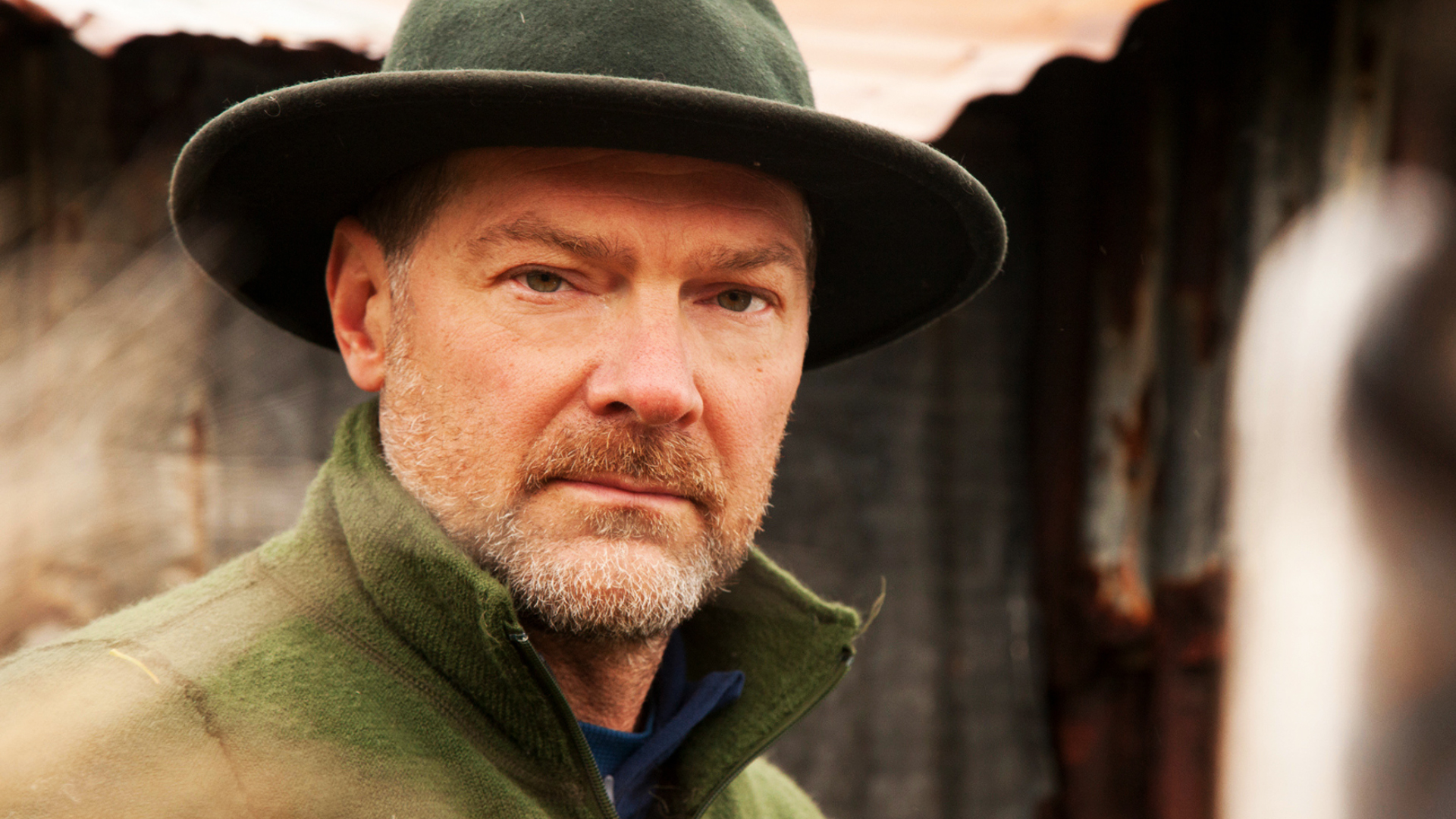
The SpeciaList
A born-and-bred Ontarian, Les Stroud is one of the pioneers of survival television, starring in the Discovery Channel's self-filmed, eight-season Survivorman series. In 2021, he was named Chief Scout by Scouts Canada. Aside from his prolific adventuring career and social media presence, he is also an award-winning musician and author.
Stroud, in many ways, is "the" expert survivor. His TV series, Survivorman, which aired from 2001 to 2016, ushered in a generation of similarly themed reality shows, documentaries and, most recently, TikTok influencers, by finessing the art of both experiencing survival and espousing it to a broader public.
But "survivor" is a term with which Stroud has an uneasy relationship.
"I'm an outdoor adventurer," he affirms. "Survival sucks – you don't ever want to have to do survival. It's like knowing first aid. Ultimately, I'm all about connecting to nature."
Here are Stroud's top five Canadian outdoor adventures.
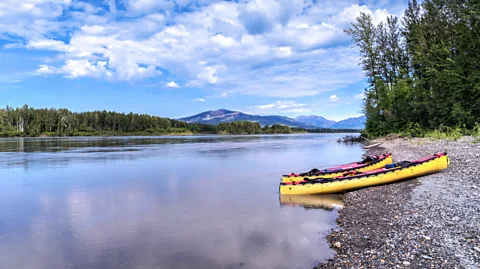 Alamy
Alamy1. Best for a beginner-friendly canoeing experience: South Nahanni River, Northwest Territories/Yukon
Straddling the border between the Yukon and Northwest Territories, the 560km South Nahanni River is an open-air gallery of glorious Canadian landscapes, from the giant Virginia Falls to its Grand Canyons; the Rabbitkettle Hotsprings to 350,000-year-old caves. With its abundance of geological treasures, the River's National Park Reserve was one of the first four Natural Heritage Sites listed by Unesco almost 40 years ago.
Don't wing it
Many things should be avoided in the Canadian wilderness – and winging it is certainly the biggest no-no. "Outdoor adventure in Canada has to be done correctly," Stroud warns. "Either with the skillset you've learnt, or a guide who is highly skilled and knows what they're doing, as well as a company that has a good reputation – all of this combined with research."
Failure to do so could lead to undesirable situations, often involving unwanted wildlife encounters. But "people worry more than they should", says Stroud. "I've been 3ft from a 650lb grizzly bear. You just have to learn how to be around wildlife."
"It's the most epic canoe trip anyone can do," Stroud says. "Every corner of the river is breathtaking. You keep thinking you're not going to see anything better than what you just saw, and you just do."
Planning a trip to the South Nahanni isn't "the cheapest outdoor adventure," Stroud warns. "But it's a big box to check off… a basic skill set will get you down the river, and you can paddle on your own. The companies on the river are top-level."
Nature in Canada is deeply intertwined with First Nations folklore; the South Nahanni is no exception. Purportedly dwelling along the riverbanks is a mythical wolf, the "Waheela", who was blamed for a spate of murders in the early 1900s.
Stroud may not have actually ever seen the beast, but he's flirted with other wildlife dangers.
"When I was a guide there, I was laying out one of the nights," he recounts. "I woke up in the morning and there were wolf tracks all around where I'd been sleeping. You can tell they were sniffing my head while I was asleep."
Website: https://nahanni.com/river/nahanni-river/
Instagram: @canadianriverexpeditions
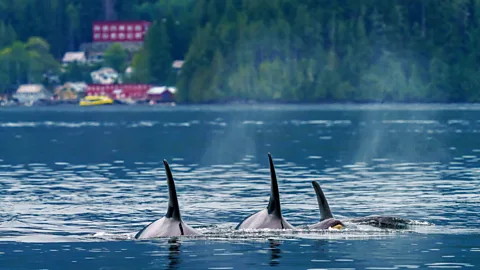 Alamy
Alamy2. Best for a more advanced sea kayaking experience: Telegraph Cove, British Columbia
For those more adept at paddling, Stroud recommends a trip to British Columbia's Pacific coast.
On the north-eastern side of Vancouver Island, Telegraph Cove is a hamlet of multi-coloured wooden cabins, and the economy relies heavily on sea sports like kayaking.
"There's an added layer of skill set here," Stroud says. "You need to know about the tidal currents, which can be very dangerous."
But intrepid, agile kayakers will find their efforts rewarded when visiting this Pacific coastal village. "It's paradise," Stroud says. "There are bald eagles, you see yourself kayaking past orcas and whales."
Even a skilled adventurer like Stroud warns against being too dauntless, especially when encountering wildlife.
"I had my three-year-old son in front of me, when we saw a sea lion and we ended up getting close to it," he recalls. "Sea lions are incredibly aggressive, and it made a beeline for us. I tried to turn around while the monster was coming at us in the water, until we got to the shore and we saw it was going back and forth, looking at us like it was mad."
"We pushed the envelope that time," he says.
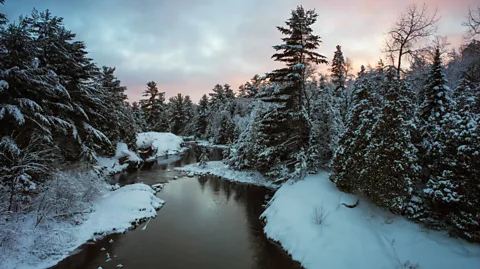 Alamy
Alamy3. Best for "hot tent winter camping": Temagami, Ontario
The line between pleasure and pain is often a fine one – and "hot tent winter camping" proves it.
"Done correctly, it's one of the most beautiful experiences you'll ever have in your life," Stroud says. "But done poorly, it's one of the most miserable."
Going hot tent camping means fully immersing yourself in the harshest of winter conditions.
"You pull a small sled behind you, on snowshoes, bringing a canvas-wall tent and a small stove, and hiking through the wilderness," he says. "It requires going with a company that knows what it's doing."
The practice had long been overlooked by those seeking more comfortable outdoor adventures – in part because of widespread aversion to the cold and winter blizzards – but it is growing increasingly popular.
Out of all the places to experience the adventure, Stroud recommends visiting the Temagami municipality in Ontario. "It's stunningly beautiful to be in the middle of the Temagami wilderness," he says. "It's [like] Algonquin Park, but more beautiful and without the people."
While hot tent winter camping requires careful planning to ensure good ventilation and a safe handling of the stove, it offers an unbeatable chance to experience the magnificence of a Canadian winter.
"I remember sitting up at night at 20:00, with -40C, in our tent in a T-shirt playing cards," Stroud reminisces.
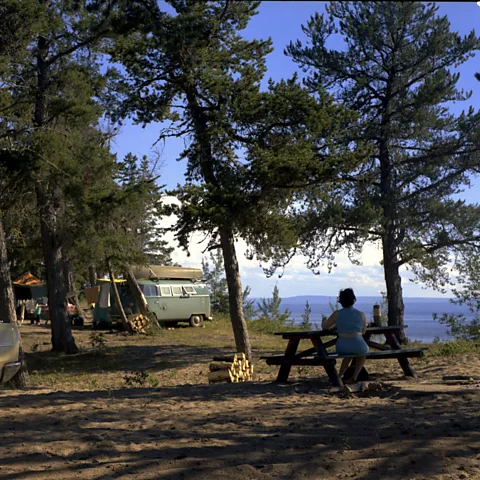 Alamy
Alamy4. Best for boondocking after a long drive: Marten River Provincial Park, Ontario
Canada's best outdoor adventures don't have to involve getting your hands dirty or wet – they can even be enjoyed from safely behind the wheel.
For Stroud, one of the most pleasurable Canadian countryside experiences is driving through its vast expanses, then camping at one of its many provincial parks – indeed, 41% of the national territory belongs to the crown and is open to the public.
Boondocking – or camping outside of designated campgrounds without amenities – often gets a bad rap due to its range of environmental and safety concerns.
But things are different in Canada, says Stroud: "It's far safer here. We don't have the same gun culture [as in the US]; your vehicle is far less likely to get broken into."
When asked for the best place to overnight, Stroud was challenged to name the top contender, but Marten River Provincial Park emerged as his favourite.
"It's a simple place that isn't packed with tourists, and it's in a great location," he says. "It's great if you're driving across the country and need a place to sleep, to get some rest."
Marten River Provincial Park is a glorious showcase of Temagami's ecosystem, with its rare flora — such as the purple fringed orchid — and ancient colossal red and white pines, some so big that "you can't even get three or four people around the trunk", Stroud says.
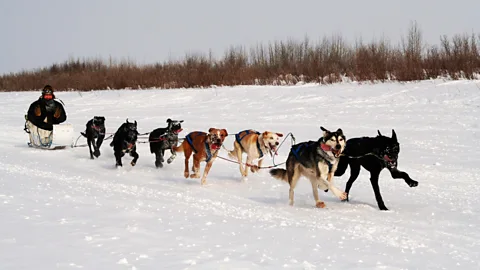 Alamy
Alamy5. Best for dogsledding in the Arctic: Inuvik, Northwest Territories
For those seeking some carefree – and relatively skill-free – winter fun, you can't beat dogsledding in the Arctic.
Up in the remote tip of the Northwestern Territories, the town of Inuvik offers visitors the chance to experience the sport. "If you're an animal lover, you throw a lot of love on these dogs," Stroud says. "And don't just do a day ride – stay overnight. You'll end up in a cabin somewhere."
While Stroud is an impassioned fan of dogsledding, he admits his first experience was not exactly recommendable.
"I was holding five Inuit sled dogs. Five huskies we can hold back, but five of the traditional Inuit sled dogs, which are twice the size, 120lb, you just cannot hold onto them."
"I was pulled for a long way like a wet rag," he adds, "until at one point I just happened to get to a spot where I hooked my foot on one tree. I was bloodied and bruised from the whole experience, like being on a medieval rack. That's when dogsledding goes wrong. But when it goes right, you are whizzing through forest with 6ft of snow."
Not only is dogsledding a joyful experience in and of itself, but it provides a more environmentally conscious approach to experiencing the Arctic wilderness, especially as the region and its settlements – such as Pond Inlet – are being wrecked by over-tourism and man-made developments.
"Snowmobiles are dirty, smelly and polluting," Stroud says. "Dogsledding is the natural and way better alternative. You can go places where snowmobiles can't."
When asked about the best way to both live an outdoor experience and capture it for an audience? "Authenticity," he says. "Being authentic to the experience, and not just chasing clicks."
BBC Travel's The SpeciaList is a series of guides to popular and emerging destinations around the world, as seen through the eyes of local experts and tastemakers.
--
If you liked this story, sign up for The Essential List newsletter – a handpicked selection of features, videos and can't-miss news, delivered to your inbox twice a week.
